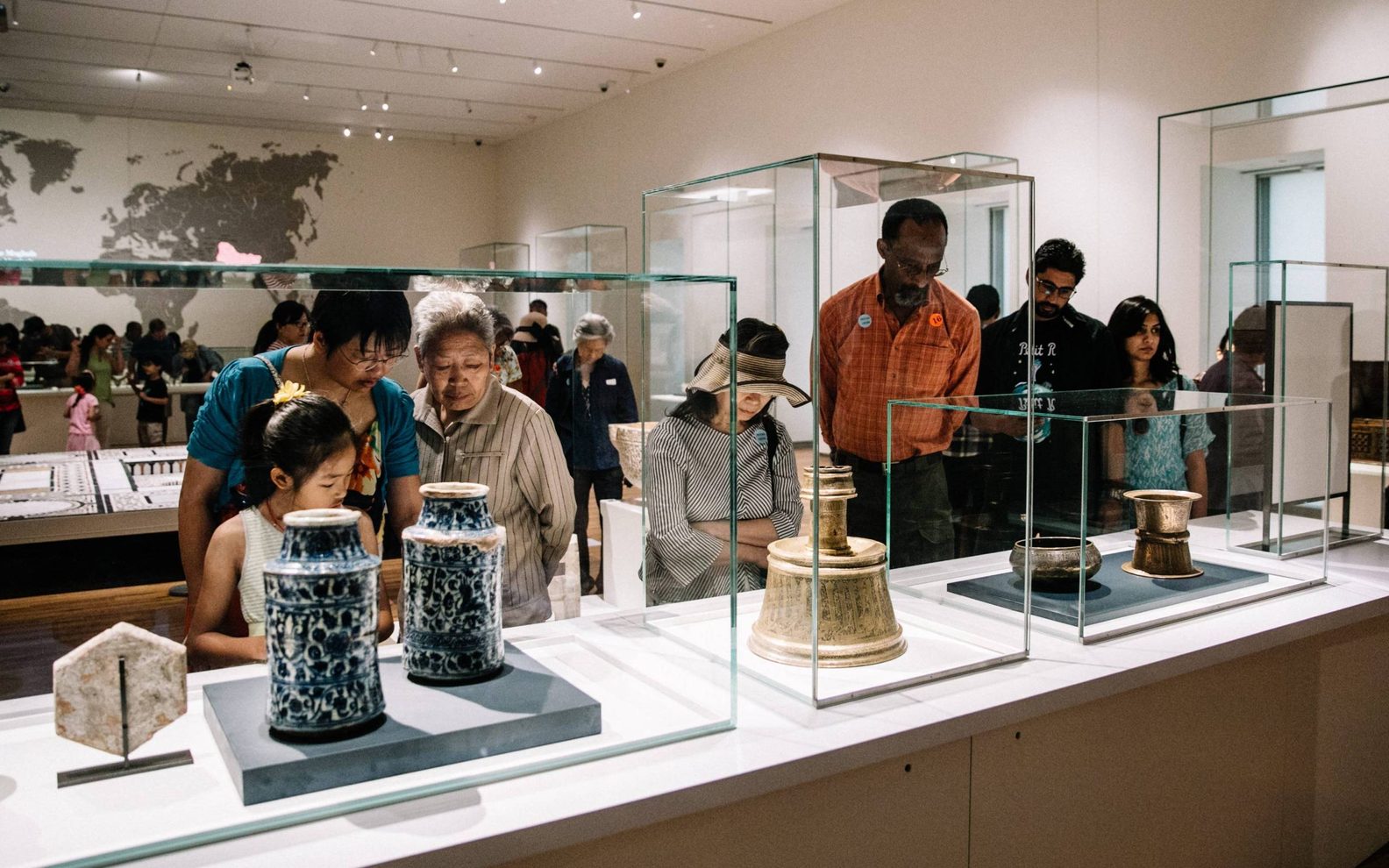
Collections
Home to a growing collection of over 1,200 masterpieces including manuscripts, paintings, ceramics, and textiles from the 9th to the 21st century, the Aga Khan Museum presents and collects art from historic Muslim civilizations as well as contemporary Muslim communities and diasporas around the world.
The core of the Museum’s Permanent Collections — spanning a vast geographic area from Spain and North Africa in the west, across the Middle East, to South Asia and China in the east — was assembled by Prince Sadruddin Aga Khan (1933–2003), uncle of His Highness, Prince Karim Aga Khan IV. Prince Sadruddin began acquiring works of art in the 1950s while studying at Harvard University. Together with his wife, Princess Catherine Aga Khan, he continued to collect throughout his lifetime.
His Highness the Aga Khan and his family have supported and expanded Prince Sadruddin’s collection since his death. Today, it represents the foundation of North America’s first museum dedicated exclusively to Islamic arts, where it is enhanced by superb objects from the private collections of Prince Amyn and His Highness the Aga Khan as well as special exhibitions and a rich roster of performances and public programs.
Acknowledgements/Remerciements:
The digitization of the collection has been made possible in part by the Government of Canada.
La numérisation de la collection a été rendue possible en partie grâce au gouvernement du Canada.
![]()

Research
The Aga Khan Museum offers broad and insightful educational programming for adults. Renowned speakers, educators, and artists engage their audiences in a variety of forums — from lectures to studio workshops and tours. Through this programming, participants gain a multidisciplinary understanding of the arts of Muslim civilizations as well as exciting opportunities to interact with the Museum’s Permanent Collection. Opportunities for research, dialogue, and hands-on experience await post-secondary and graduate students at the Aga Khan Museum.


